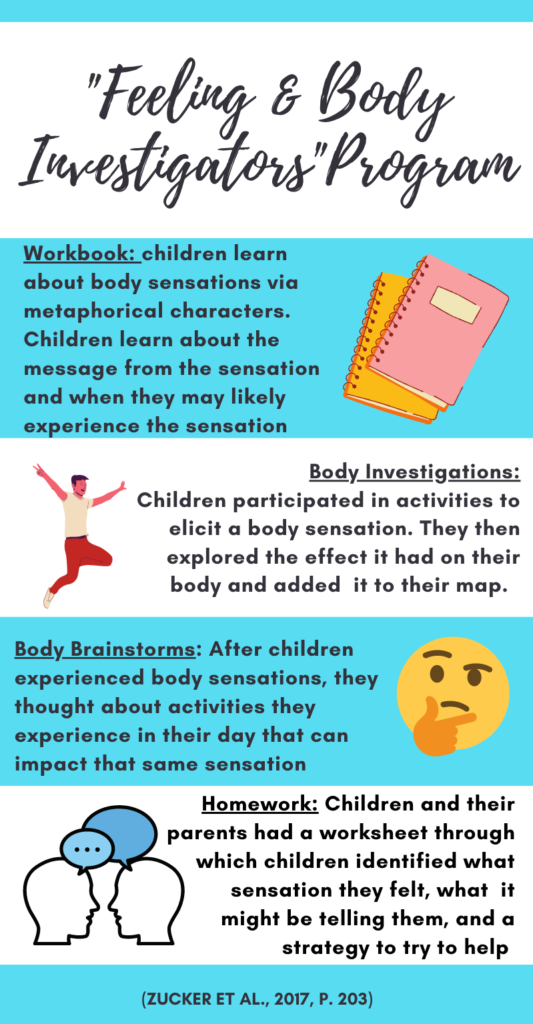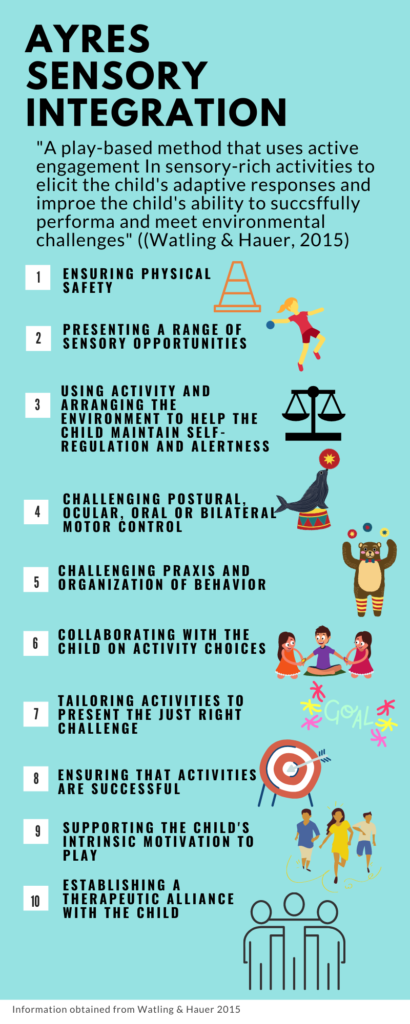
The newer kid to the more mainstream discussions in pediatric OT is interoception. The term cropped up I’d say about 2-3 years ago. It speaks to how we experience the internal signals of our body and the effects those have on regulation and awareness. I think it is definitely crucial to consider when working with children with Sensory Processing issues.
One thing the study authors emphasized in this study and approach is the idea of teaching children to be curious about what their bodies are telling them. I take this as the idea being to not stigmatize the feelings. I think this is very insightful and helpful from an acceptance based approach! I think that often children who have more sensitive sensory systems are often also anxious and/or struggle with more intense feelings. For these children they may compound their negative feelings when trying to please others if made to feel badly about their feelings. I think the authors are on a very good path by reframing the children’s sensory sensitivities in a positive light.
Journal Behaviour Research and Therapy (SNIP 2.086)
Article Title Acceptance-based interoceptive exposure for young children with functional abdominal pain
- 1A Systematic review of homogeneous RCTs
- 1B Well-designed individual RCT
- 2A Systematic review of cohort studies
- 2B Individual prospective cohort study, low quality RCT, ecological studies; and two-group, non-randomized studies
- 3A Systematic review of case control studies
- 3B Individual retrospective case-control studies; one-group, non-randomized pre-post test study; cohort studies
- 4 Case series (and low-quality cohort and case control study)
- 5 Expert opinion without explicit critical appraisal
Methods Child were screened and recruited from a pediatrician’s office. Inclusion criteria included:
- Age between 5 years and 9 years 11 months at time of screening
- A guardian who was fluent in English
- At home access to a device with video chat function
- Positive Screen for FAP on the Questionnaire on Pediatric Gastrointestinal Symptoms Rome III Version (Meaning 2 or more stomachaches with impairment or 8 or more stomachaches with or without impairment over 2 months time (Zucker et al. 2017, p. 202)
Children who had an IQ of <70 or pervasive developmental delay were excluded.
Intervention
Parents completed a semi-structured interview, and both parents and child completed 2 weeks worth of a pain-diary. Both parents and child also completed multiple self-report questions. These provided information on the mental health of the parents and child, emotional regulation and pain symptoms. Parents completed ratings of their children’s pain before treatment and two weeks after treatment.
What was in the pain diary?
- A parent and child rating on a pain thermometer that indicated the intensity of the child’s pain
- A parent report with insight on their child’s distress about the pain
- The child’s report of their affect
Treatment

Children participated in 10 weeks of therapy during which they participated in cognitive and physical activities to promote becoming, “Feeling and Body Investigators.” Both parents and children received positive reframing education on how their sensitivity can be beneficial and an advantage.
The children’s parents traced them on a piece of paper to create a body map that was then used throughout treatment. Researchers then introduced children to specific body sensations. They also completed exercises that illustrated interoceptive feelings (Zucker et al., p. 203).
See the infographic for more details on the treatment intervention.
Findings
Investigators found that parents’ ratings of their child’s pain were significantly reduced following intervention. Similarly, the children’s ratings of their own pain decreased significantly.
Parents’ ratings of the distress their child’s pain caused them were also significantly decreased following intervention. The authors suggest this supports the study’s aim of reducing a child’s fear of their own bodily sensations.
Parents also rated how their child’s pain interfered with their day pre and post treatment. After treatment, parents’ ratings improved significantly.
Both children and their parents reported decreased negative affect (such as sadness and nervousness) for children following treatment.
Things to Consider
The demographics of this study were mainly caucasian (75%) females (66%) (Zucker et al. 2017, p. 206). One may consider how easily the findings can generalize to the general public who presents with FAP. The study authors also mentioned that the sample size was small and there was no control group.
References
Zucker, N., et al. (2017). Acceptance-based interoceptive exposure for young children with functional abdominal pain. Behaviour Research and Therapy, 97, 200-212.


